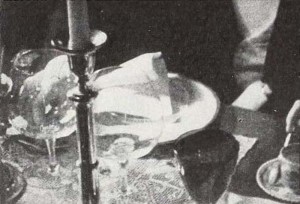
"I'd Be Delighted To!, directed and photographed by S. Winston Childs, jr., ACL, is that kind of production often planned but seldom made — a film story told entirely in closeups. Presenting the simple incident of a dinner a deux in a gentleman's apartment, the picture runs through 400 feet of brilliantly chosen, strikingly filmed, significant closeups. It is adroit, amusing and sophisticated, and a splendid example of what, with skill and care, can be done in this distinctly advanced amateur filming method." Movie Makers, Dec. 1932, 562.

"Kendall T. Greenwood, who has proved his competence in a number of detailed industrial records, turns with Incident from Life to the ways of a growing lad and achieves a clear and carefully observed record of his own youngster that will, in years to come, testify to the fact that his father took the boy seriously. Mr. Greenwood's picture is a compliment to his son and, as we think it over, an unintentional compliment to an understanding father as well. Young Greenwood is a reader. In the course of his reading, he comes upon the subject of diving, but he does not let the matter rest there. Paralleling the "spool and old coal hod" of another inventor, he contrives, out of the detritus of a trash heap and a cautious borrowing from Dad's camping outfit, a diving bell that works so successfully that he goes down with it into a lake near the family home. Father maintains an almost incredible calm and communicates some of it to his wife, although Mrs. Greenwood's face is a study, when the boy's young helper fouls the airline and has to be assisted by Mr. Greenwood. But all ends well, as an absorbing and well made picture comes to a close. Director, actor and cameraman (although Mrs. Greenwood must have lent needed aid), Mr. Greenwood has made a family film that is dignified and interesting and, above all, is one that Junior need not shrink from, as it is shown in later years." Movie Makers, Dec. 1942, 506.
"An Interlude in Happy Isles, made by Dr. Delmer J. Frazier, is one of those comparatively rare vacation pictures that tell their story in detail, but only in that detail which will mean something to an audience that did not have the good fortune to take the same trip. We have no road signs nor guide maps (except for cinematic effect), we don't even know where "Happy Isles" may be. All we know is that the Frazier family has a delightful time there; that they plan their trips with care; that they love the woods and the wild life; and, finally, that their appreciation of it all thoroughly entitles them to an interlude of pleasure. This film is an excellent technical job — the interiors at the beginning of the picture are beautifully lighted, and follow shots of the squirrels in the woods are quite amazing. However, it is the continuity of this picture, with its well planned incidents, that gives it Honorable Mention." Movie Makers, Dec. 1936, 549.
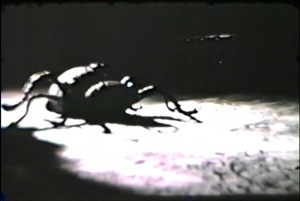
Horror film involving a family, a lodger, and the lodger's spiders.
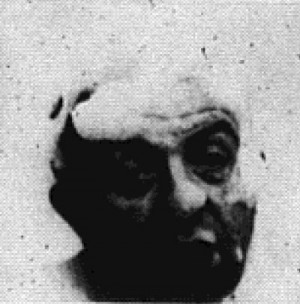
"Everyone knows a woman's penchant for a bargain, and this time it is father's favorite shaving soap - in quantity. Storage is a problem, but to a good housewife this can soon be solved. The trouble is, she fails to tell father. Still sleepy after his vigorous morning "one-two-threes," he quickly and incautiously, opens the "storage chest." When several cans of pressurized soap go tumbling against the hard surfaces of the bathroom fixtures, disastrous, and hilarious, things can happen" PSA Journal, Oct. 1963, 40.
"Jeannie is the little girl in the house where too much of the family income is spent for purposes other than family. With the aid of the court Jeannie is assigned to a Home where she can have the things she needs and toys and playmates. Perhaps we all know the story but each one tells it differently, arriving at a happy ending. The foundation of this club production was a publicity film which it made and donated to the Home" PSA Journal, Nov. 1959, 48.
"Leo Caloia unlimbered his new Auricon sound camera to produce much of this picture and all of its sound track, but tighter editing as well as better direction would have greatly inproved the result. The continuity has to do with a couple, seen washing the supper dishes, discussing a proposed vacation, for which they have been putting money in a joint bank account. As they discuss the various places they would like to visit, there follow a number of scenes of each, then the camera cuts back to the discussion. The wife is summoned to the door by the mailman, receives a bill from a sporting goods store. She questions her husband about it and he confesses to having spent the proceeds of their bank account for a new set of golf clubs." American Cinematographer, May. 1951, 192.
"Joyous Noel by Gilbert B. Jansen Jr. is the sort of color motion picture record of an American family's Christmas that so many home-loving cameramen dream of producing - but seldom do. Undoubtedly the producer and all members of his family will treasure this film immediately. Not a great work, Joyous Noel is nevertheless an unusually good Christmas film in which all of the preparations and celebrations found in graceful family living are depicted through the activities of a young couple and their two children. Well lighted scenes, technically proficient camera work, pleasant acting by all concerned, and a background of Christmas carol music all contribute to make this a thoroughly pleasant production" PSA Journal, Jan. 1955, 50.
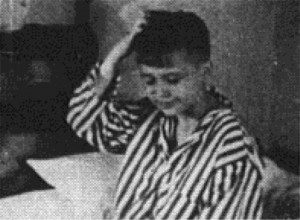
"Just another day with junior and the usual problems of getting a boy to get out of bed, wash, dress, and finally eat his breakfast as he must get along to school. An opportunity for some of us to relive those long-ago days" PSA Journal, Nov. 1960, 42.
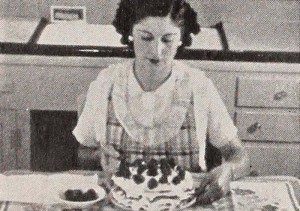
"Within the brief confines of Lady on June Street, Leo Caloia presents a satisfying example of the personality film worked out in story form. Faced with the common problem of family filming, he has resolved the riddle with imagination, humor and marked cinematic ability. The "lady" in question is pictured as a lazy, luxury loving wife, spiritually eager to be the best of helpmates, but physically enslaved to satins and sweetmeats. Dozing, as she regards with languorous ambition an advertisement for homemade shortcake, she dreams vividly of a sweet but unaccustomed success with pot and pan. Crash! In her dream, the lady slips, and her magnificent shortcake slithers across the kitchen linoleum. Bump! In reality, she has rolled sleepily from her couch, to awake with a thud on the living room floor. The film fades swiftly as she hurries the tops off canned beans and sauerkraut." Movie Makers, Dec. 1939, 632.
Total Pages: 19